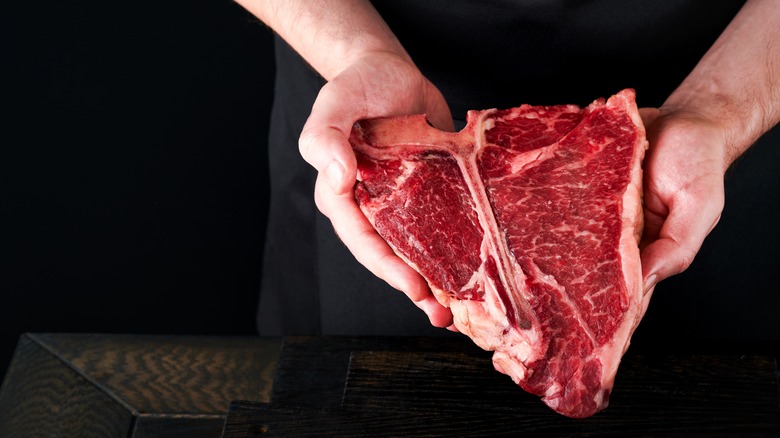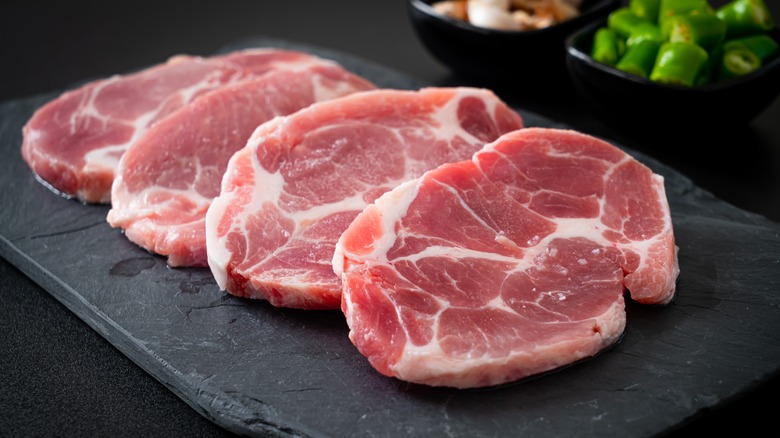The Science Behind How Tenderizer Powder Works On Steak
Even when it's taken from the same carcass, not every cut of meat has the same quality or price. While prized cuts like pork tenderloin or steak tenderloin offer unparalleled flavor and texture, they often come with a hefty price tag. If you're cooking on a budget, more affordable cuts like steak chuck, flank, skirt, or pork shoulder won't break the bank in return for having a tougher texture.
That's where meat tenderizer powder comes in. Sprinkle a generous amount on the meat and punch a few holes into the meat to allow the powder to penetrate the cut better. After that, you can cook the meat on the stove immediately. As the meat is cooking, the powder will work its magic and mellow out the meat, giving you a meal that's tenderer and more enjoyable than without.
Meat tenderizer is quite simple to use, and there's only one thing you need to remember: Don't let it rest on the meat for too long. Allow around 15 minutes for the powder to work for modestly-sized cuts. You can let it work for longer with thicker cuts but don't go over 30 minutes. If you let the tenderizer sit for too long on the meat before cooking, the meat risks becoming excessively tender to the point of being mushy.
How does meat tenderizer powder work?
To understand how meat tenderizer powder works, we'll have to familiarize ourselves with the concept of "shear force." It refers to the pressure that you need to apply to tear up the muscle strands that compose the meat. Super tender cuts demand very little shear force to rip, which is why they're so tender they basically melt in the mouth. Vice versa, tougher cuts require more force to be applied before the muscles separate.
Meat tenderizing powder contains an enzyme that, when coming into contact with meat, weakens the bonds between muscle fibers. This process, called protein denaturation, effectively decreases the shear force required to tear up the meat. That's how the powder can get tough meat cuts to "mellow out."
But there are certain caveats. The tenderizing effect of this powder is only noticeable within the outer ¼ inch of the meat (even if you punch holes into the meat to get the powder to penetrate deeper). As a result, if you're whipping up steaks or chops, meat tenderizing powder can absolutely be a game-changer. But for recipes that require thicker cuts, like a whole pork roast, don't count on the tenderizing powder to counter the toughness of the cut. You'll be much better off investing in a quality cut upfront.

